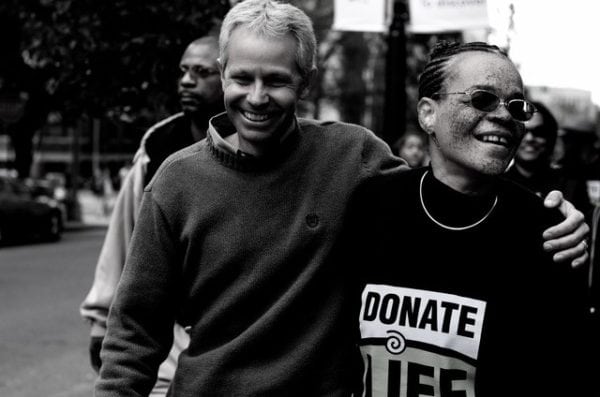For weeks, Roxanne Watson thought she’d pulled a muscle in her back.
“I worked in a retail store and was helping unload merchandise from a truck when I felt this pain,” recalled Watson, 62, who lives in Nanuet, New York.
After taking a couple of aspirin she went home to lie down. For the next six weeks in 2006 she tried to live life as usual, but the nagging pain wouldn’t go away.
Finally, she went to the emergency room to get checked out.
“They did some tests and then three doctors came back into the room. I said to myself, ‘This can’t be good.’”
As often happens, especially with women, Watson didn’t have tightness of the chest and other “classic” heart attack symptoms.
Instead, it felt like a simple pulled back muscle.
She was angry at herself for going so long without seeking help.
“I absolutely should have known it was a heart attack,” she said today. “My grandmother, my mother, my aunt, every woman in my family has had heart issues.”
More tests revealed that Watson’s heart was failing. She entered the advanced cardiac program at Montefiore Medical Center in the Bronx, New York.
By 2008 things had deteriorated to where her doctor told her she needed a heart transplant. Watson was shocked.
“I looked at her like she was crazy,” she said. “But then she told me what I had couldn’t be fixed.”
The problem was, she’d have to get even sicker before she’d rise to the top of the transplant list. For two years she waited, getting weaker and weaker.
“I’d have episodes at, like, two in the morning where I felt like I just couldn’t breathe. I had to go outside to get fresh air.”
She called 911 often enough that the local EMS knew to make sure the crew had a cardiac defibrillator with them.
By April 2010, Watson had lost 40 pounds and was at the top of the list where she remained for 104 days—78 of them in the hospital.
During that time three hearts became available and three hearts, for various reasons, were deemed unsuitable. Still, she never gave up hope.
“You can usually tell which transplant patients will do well by their outlook on life,” said Julia Shin, M.D., one of Watson’s cardiologists at Montefiore. “She was never down, never felt sorry for herself. I wish I could bottle her enthusiasm and inject it into other patients.”
Finally, on a Saturday night in July, her Jewish transplant coordinator broke the Sabbath to call and tell her an acceptable heart was available.
When Watson, then 56, awoke after the operation, the change was dramatic. Before, she was so pale her son Kellen had teased that she “looked like a white person with freckles.”
“After, I could feel my heart beating in my chest,” she said.
It wasn’t until she was invited to appear on an episode of Oprah Winfrey’s show “Oprah’s All Stars” that Watson learned she’d received the heart of U.S. Coast Guard fireman Michael Blain Bovill.
Only 23 and in perfect health, Bovill had been killed when his motorcycle was hit by a truck on the George Washington Bridge. Four other people received Bovill’s organs and all later met his family, too.
Although Watson was recruiting people to be organ donors before her transplant, meeting the Bovill family was a turning point.
“After I met the family I decided I was going to work to raise awareness of organ donorship forever,” said Watson, who has signed up more than 9,000 donors. Only about half of all U.S. adults are registered as organ donors, according to federal statistics.
“I’m not a doctor or a nurse, but this is something I can do to be a lifesaver,” she said. “It’s like I’ve found a second life.”
From American Heart Association
‘Second Life’ Dedicated to Enrolling Organ Donors






